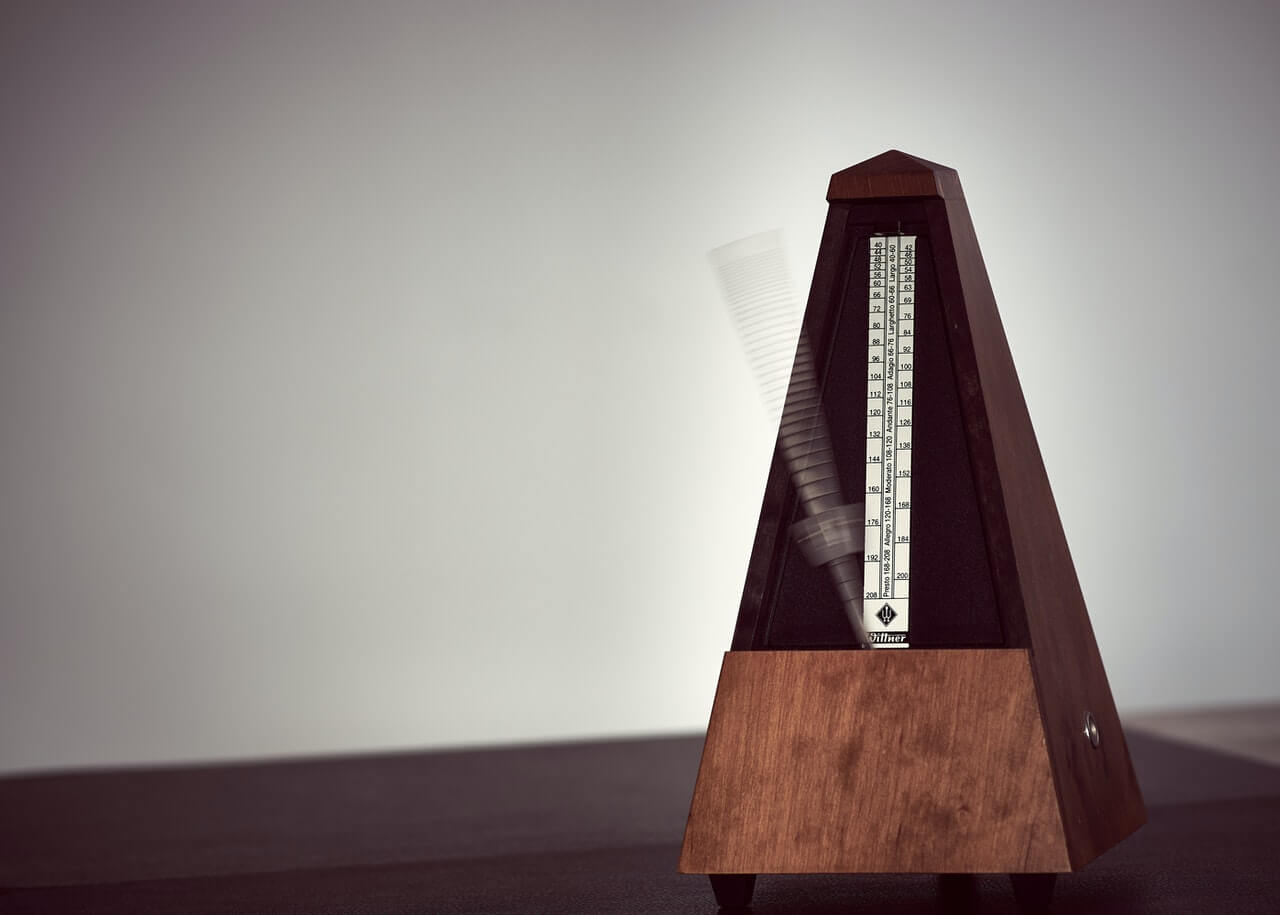Telling students to use practice tools is hardly a new thing. I know I am constantly telling (and showing) students the value of these devices. The regular use of these tools can make practice sessions shorter and more productive.
This is especially true for late beginners or intermediate players. Once the foundations of making a sound and basic rhythms have been established, these tools speed up the feedback loop. This means that a player will only do a wrong note or rhythm once or twice, instead of dozens of times!
For more advanced students using these tools can sometimes be a hindrance. If you’re always relying on a metronome to subdivide, it will be harder to internalize the sensation of subdividing without the metronome. If you are always chasing the tuner to play in tune, then it will be harder to develop a strong internal sense of pitch.
Complementary vs. Competitive Tools
This idea of hurtful tools is from Dr. David Kraukauer, who studies “the evolution of intelligence and stupidity on Earth” at the Santa Fe Institute. His idea of “complementary vs. competitive cognitive artifacts” primarily relates to AI, apps, and algorithms, but it fits in nicely with music practice.
The idea is that there are two kinds of tools:
- complementary cognitive artifacts are tools that help us get better at a skill, even when the tool is taken away.
- competitive cognitive artifacts also improve our ability at a task, but our ability to perform the task drops when the tool is removed.
This blog article by Larry Weeks points out some ways that everyday tools can be competitive :
- According to some research, excessive use of a GPS device can lead to atrophy of the hippocampus – a part of the brain responsible for spatial navigation.
- Other research has shown that purchase and entertainment decisions can be influenced by algorithms on Amazon and Netflix, respectively.
Here are some ways you can make sure your practice uses complementary tools.
Using a (Complementary) Tuner
Take a standard tuner – when using it normally (i.e. watching the needle and adjusting to keep the needle centered), a player will likely play more in-tune. Since the player was likely using their eyes (and not ears) to play in tune, when the visual reference is gone, the pitch will likely be no better than before. This makes the tuner (used this way) a competitive tool.
Using a drone to improve pitch is a complementary tool. The drone can help a player hear, see, and “feel” what it’s like to play in tune. By using a player’s ears (and other senses) to play in tune, the ability to match pitch to an external reference improves. This means that they are more likely to be able to stay in tune even when they don’t have a tuner in front of them.
Using a (Complementary) Metronome
One of the best ways to learn rhythm is to count (and play) while a metronome sounds a moderately fast subdivision. While this is an effective way to learn how rhythms are constructed and how to count them, having the metronome subdivide makes it a competitive tool for advanced players.
Once a player is capable of subdividing, they should strive to maintain rhythmic accuracy with the metronome set to slower beats. Depending on the speed of the piece and the metronome’s capabilities, setting it to one beat per measure or one beat per phrase may be possible.
I know Tonal Energy goes down to 10 beats per minute – this would be quite a challenge, but it would ensure that the internal subdivisions are both strong and consistent.
Another option for a complementary metronome would be something like the intermittent metronome that I blogged about late last year. This feature is now built into several different apps (including Tonal Energy) and is a great way to make sure the metronome serves as more of a “check” than a “crutch”.


Leave a Reply
You must be logged in to post a comment.